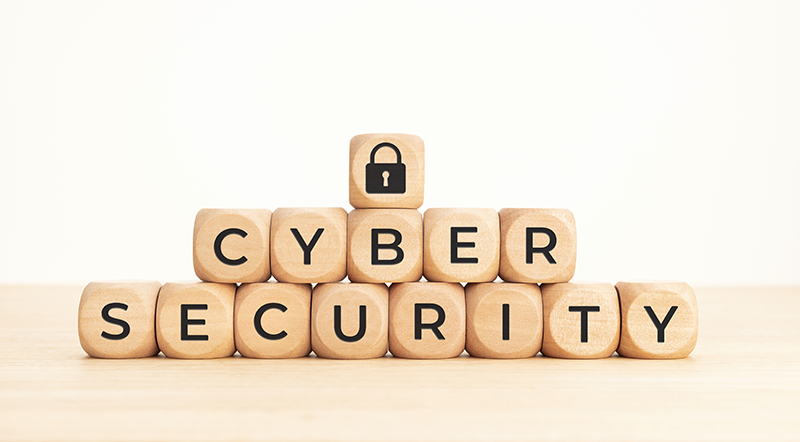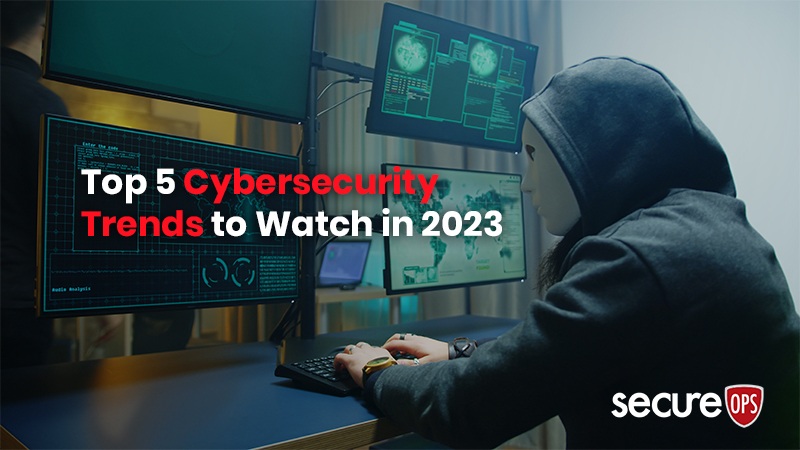Analyzing Security Incidents for a Better Future Response
We wrote about Incident Response in blog post titled “Incident Response Technology has become Critical to Limiting Damage.” We discussed the dramatic increase in the number of attacks including the
Choosing the Right Security Services Provider
Managed Security Services – the Next Frontier Several weeks ago we wrote a blog post titled, “A Look at 2023’s Top 5 Cyber Risks – and Strategies for Defending Against Them;”
SecureOps Launches a New Cyber Security Operations Center in the Philippines
A New Security Operations Center in Southeast Asia Will Provide Clients Premier Cybersecurity Protection SecureOps strengthens its status as a cybersecurity leader with the opening of a new Security Operations
A Look at 2023’s Top 5 Cyber Risks – and Strategies for Defending Against Them
Last month we wrote a blog post titled “Top 5 Cybersecurity Trends to Watch in 2023,” which discussed the following five trends: Trend 1: Threat Actors Are Preying on People’s
Building a Next-Generation Security Operations Center
Building an enterprise Security Operations Center (SOC) calls for careful planning and the precise coordination of people, processes, and technologies, as we covered in our previous post, 7 Steps to
7 Steps to Building a Security Operations Center
Reviewing cybercrime statistics for the year is always a sobering exercise, and 2022 is no exception. Threat actors continue to up the ante, and data breaches grew significantly in Q3 2022,
What is Layered Security, including Phishing Defense?
As the rapidly changing cyber threat landscape continues to increase, so must our approaches to protecting against these threats. However, most organizations only realize they're vulnerable after a breach has
Top 5 Cybersecurity Trends to Watch in 2023
There’s an oft-quoted ancient Chinese proverb that says: “May you live in interesting times.” It seems to resonate with our current situation: geopolitical upheaval, a pandemic recovery, a recessionary climate,
What Does Web 3.0 Mean for Cybersecurity?
The basic definition of Web 3.0 is it will be the next significant evolution of the internet in which all web data is machine-readable. Each web page has semantic metadata
CISO’s Earning a Seat at the Board is Now a Priority
Our crack team here at SecureOps found one of the more interesting studies concerning the of focus both Boards of Directors and senior executives are giving their organization’s cybersecurity investments and strategy. Skybox Security was commissioned to perform a study of executives across a variety of industries which found that 27% of executives say new technologies are their largest cybersecurity worry. In our new environment of slower growth, higher interest rates and rampant inflation, business growth is a top priority. Despite the environment, most organizations are still smack dab in the middle of a digital transformation putting cybersecurity leaders in the position of having to secure new technologies like cloud, IoT, BYOD and countless other technologies with little or no budget increase. These digital transformation investments and strategies including investment into new markets, and global expansion bring a level of risk for organizations with the expectation of new revenues and growth. The Skybox Security study showed cybersecurity is now at a critical inflection point:
- Global business leaders agreed we have entered a new era of cyber risk. In 2021, the number of material breaches jumped 24.5%.
- 27% of executives believed their organizations were not well prepared for today’s rapidly changing threat landscape.
- And 41% of executives noted that “cyber risk initiatives have not kept pace with digital transformation,” with 39% of CEOs saying they have “inadequate budgets to ensure cybersecurity.”
Factoring in Risk into Organization Growth Models
Cybersecurity readiness is a choice, and CISOs can use outcome-driven cybersecurity metrics and cyber risk scores to paint a clear picture of prevention investments. Many organizations now develop risk models when creating their digital strategies. Cybersecurity risks and attacks ultimately impact forecasted financial expectations. Considering all the variable factors within cybersecurity incidents, including malware - particularly ransomware attacks, loss of data, and the impact on the organization's brand, including the loss of trust among customers, investors, and business partners, how can an organization develop a predictable model for risk? A corporate-wide security posture risk-based approach considers two critical tasks. (1) it designates security as the primary goal. This enables the organization's leadership to prioritize investments, such as cybersecurity training and incident response. (2) the approach distills top-level objectives into practical implementations that align with the boardroom priorities. Companies have adopted various approaches to reducing cyber risks and their potential impact. Some have focused on improving existing processes and procedures through risk assessments; others have sought to improve technology and information systems. However, regardless of how they've approached the problem, most have found that the best way to reduce cyber risk is to adopt a systematic, disciplined process that focuses on identifying and prioritizing threats, then defending against them. In doing so, companies can significantly reduce costs and increase efficiency. They can also avoid wasting money on unnecessary investments and controls in order to spend more wisely on the investments and activities that will ultimately reduce risk. Many of these investments include preventing a loss of data confidentiality from insider threats and breaches.
Companies have adopted various approaches to reducing cyber risks and their potential impact. Some have focused on improving existing processes and procedures through risk assessments; others have sought to improve technology and information systems. However, regardless of how they've approached the problem, most have found that the best way to reduce cyber risk is to adopt a systematic, disciplined process that focuses on identifying and prioritizing threats, then defending against them. In doing so, companies can significantly reduce costs and increase efficiency. They can also avoid wasting money on unnecessary investments and controls in order to spend more wisely on the investments and activities that will ultimately reduce risk. Many of these investments include preventing a loss of data confidentiality from insider threats and breaches.
Cybersecurity Strategies Developed Inside the Boardroom
Cybersecurity roles, including the chief information security officer (CISO), have a powerful presence within the executive C-suite within the organization…finally. No longer considered just an expense item, cybersecurity has several businesses benefits, including:- Revenue protection
- Brand protection
- Reduction of overall risk to the business
- Increase in the enterprise value of the organization
- The ability to open new markets domestically and globally
Revenue Protection
Sound and effective cybersecurity risk management and proven defense effectiveness adds a vital element of trust across customers and employees. Customers who trust their providers with their information, including their approach to safeguarding their private information do more business those organizations.Brand Protection
Brand protection also benefits from improvement cybersecurity investment. Organizations with no reported public or private data breaches, no failures to meet privacy and compliance frameworks, and a proven governance capability embedded into cybersecurity in their culture are more likely to increase brand equity. This culture originates from the board of director’s investment, acceptance, and leadership in having cybersecurity initiatives placed on par with growth initiatives.Reduction of Risk
Risk and security incidents continue to rise in large part because of human error and employee negligence. Email phishing attacks continue to impact organizations negatively. Organizations realize cybersecurity is not isolated to one area. A breach can occur across all areas of the organization including 3rd party partners. Adopting a corporate-wide cybersecurity frameworks including NIST, CIS 20, or ISO 27001 help create a unified enterprise-risk reduction and cybersecurity capability.Increasing Organization Equity
Many organizations often will rely on cyber insurance to help offset the expense of financial damage from cyber-attacks. Many external audit findings find that cybersecurity insurance is an immediate necessity to the business; however, they also recognize this financial protection is not a long-term strategy, but simply a way to reduce the overall cost of a damaging attack. Unfortunately, insurers have found that the loss ratio in cyber insurance has been nearly 110% in many cases and premiums have skyrocketed. The cost of cybersecurity premiums continues to rise along with demand for more significant layers of cybersecurity solutions, keeping experienced cybersecurity professional security teams hunting for new technology. The organization must develop and enforce security policies, effective security operations (SecOps) capabilities, and capacity to meet the constant security attacks against organizational assets.
The cost of cybersecurity premiums continues to rise along with demand for more significant layers of cybersecurity solutions, keeping experienced cybersecurity professional security teams hunting for new technology. The organization must develop and enforce security policies, effective security operations (SecOps) capabilities, and capacity to meet the constant security attacks against organizational assets.











